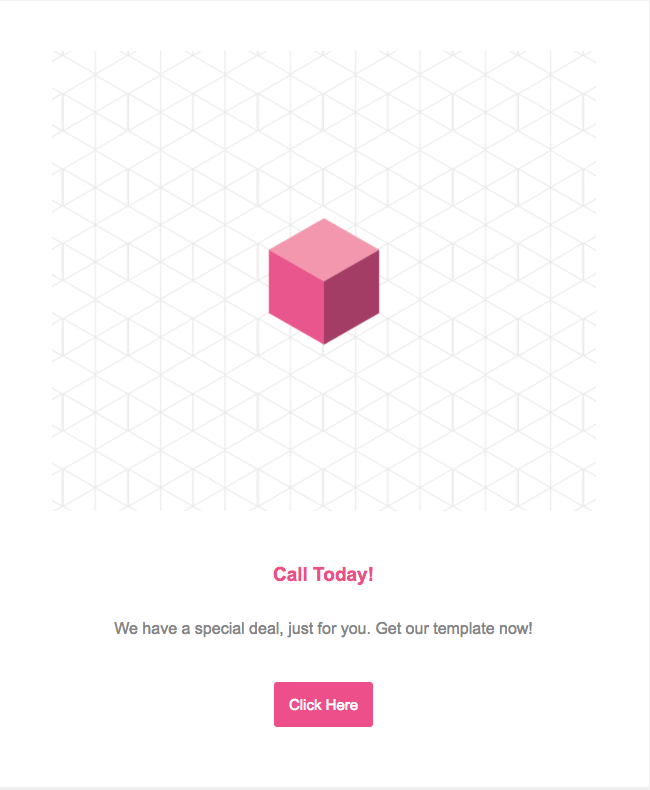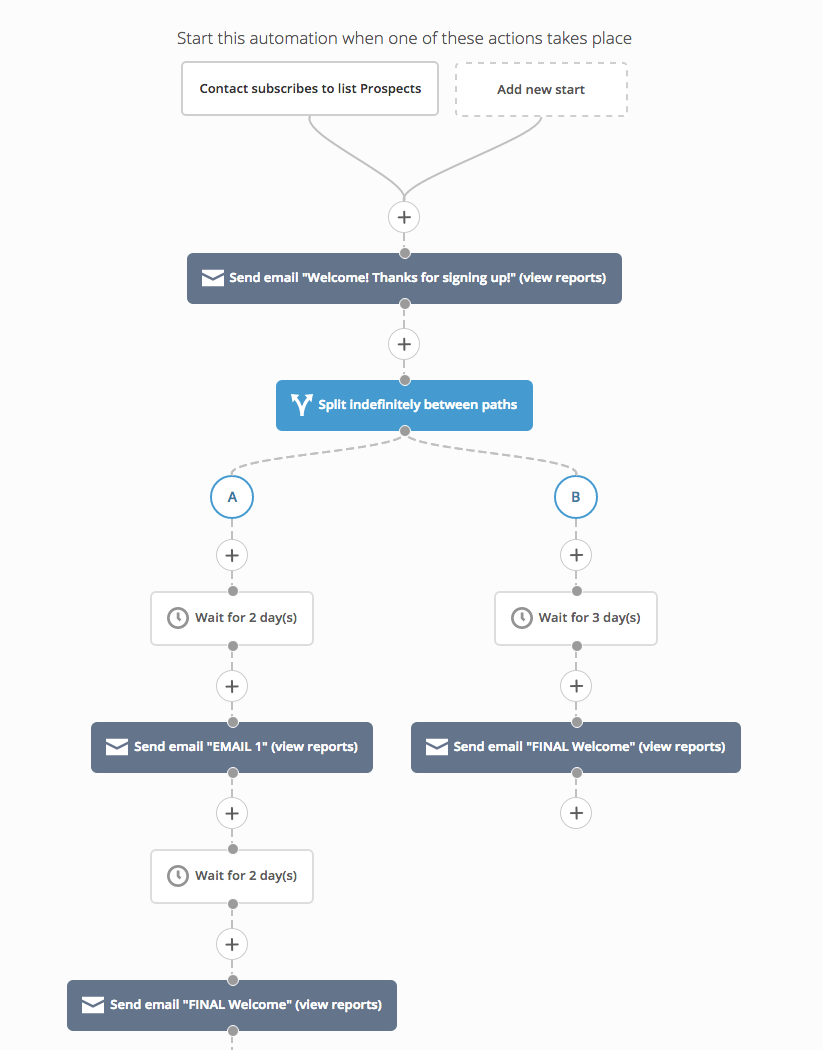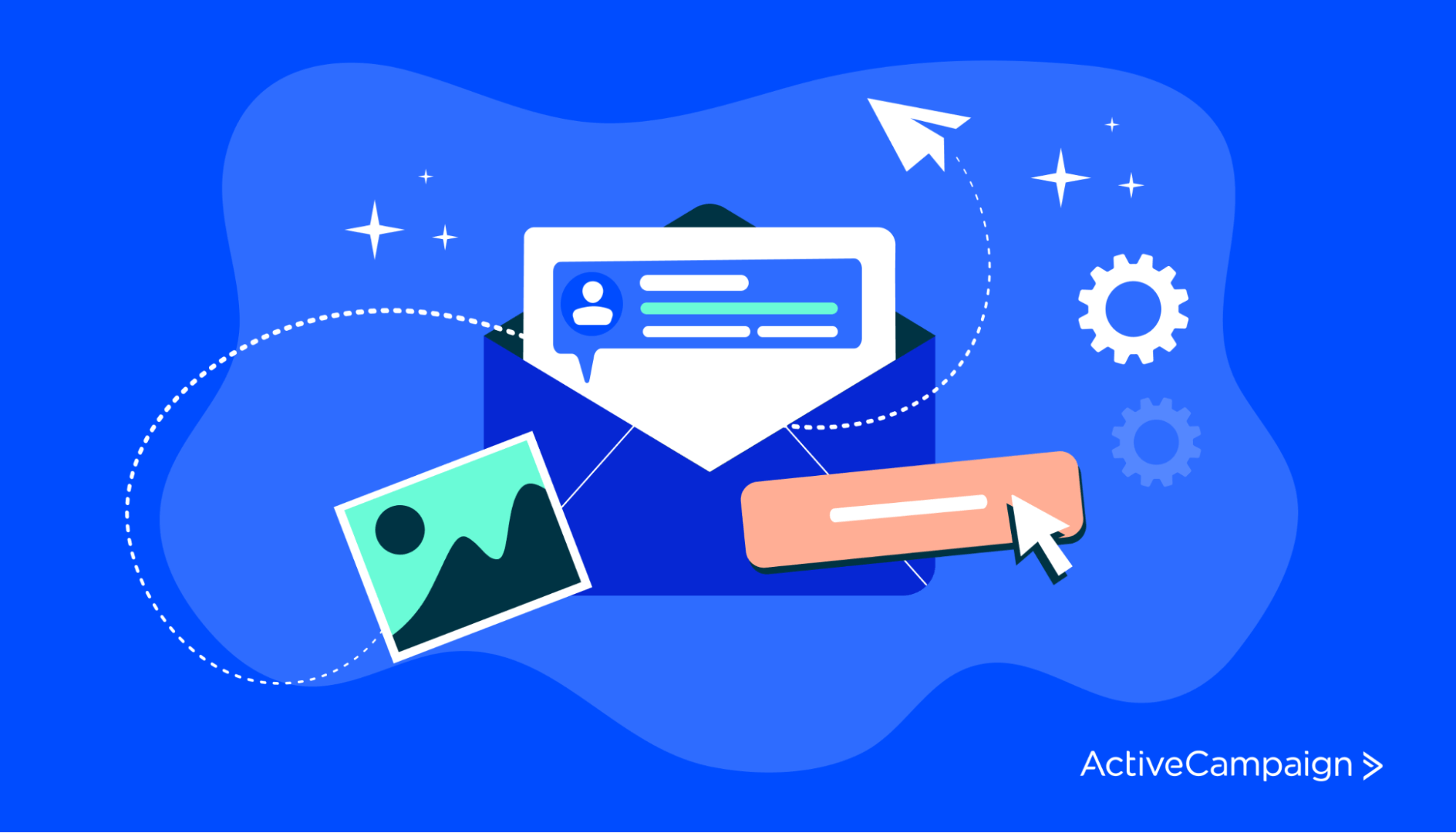ActiveCampaign’s Guide to Revitalizing Your Email Results
Sometimes, an email will underperform. But marketing automation empowers you to test your messaging, try alternate routes of communication, examine the potential reasons for failure, and come up with a plan to try again.
In this guide, we will dive into the side of email marketing when things seemingly are going wrong, and how to identify and resolve these issues quickly!
In addition, we will examine the common reasons behind low open rates, disappointing conversion rates, and the dreaded unsubscribe (it’s not always bad, we promise!). At the end of this guide, we will talk about how to write great messages that will drive engagement and loyalty for your business.
Understanding Your Email Metrics
Within your ActiveCampaign account, three metrics are great indicators of your contact’s level of engagement. These are the open rate, conversion rate, and number of unsubscribes. Let’s dive deeper into each of these:
Low Open Rate
Since the rise of email marketing, open rates quickly became the leading success metric that every marketer defaulted to. However, these days it’s a different story. Open rates are affected by many factors and may not be an accurate indication of contact engagement alone, but it does play a crucial part in a bigger strategy among other metrics to give you a pulse on your contact’s engagement level.
Recent research has shown that the average email open rate across all industries is 21.33%. Rates can vary from industry to industry, but this is a good level set to compare your emails and determine if you are doing well or if there is room for improvement. One reason you may have a low open rate is due to the time you send your emails.
Built into your ActiveCampaign email designer is Predictive Sending—a feature that can send your email campaigns at the right time to ensure the highest open rate from each contact. This feature uses our powerful data model to analyze each of your contact’s habitual open time and use this data in conjunction with historical data to deliver the campaign to your contacts’ inboxes.
Another reason for low open rates is the subject lines and preheader text. Subject lines are the first impression for your email campaign and it needs to be convincing enough for your contacts to open your email among a sea of others in their inbox.
Did you know there were over 300 million emails sent in 2022 and it’s expected to rise consistently over the next few years? This means that it’s extra crucial that you can leverage engaging subject lines and preheaders to drive up your open email campaign’s open rates.
Finally, it’s important to take a look at who you list as the sender for your email campaigns. An email coming from the founder of the company with a warm welcome message might do better than a generic one that is signed off as “Team Company Name”. You can determine this for your business by split-testing your campaigns and learning the best sender option.
Low Conversion
Another metric that can showcase your email campaign’s effectiveness is the conversion rate. When your email campaigns are not translating into the desired number of conversions whether it is ticket sales, webinar registrations, or pre-orders of your latest product it might be time to craft a strategy around bringing up the conversion rate. Did your email effectively guide your contacts towards the action you wanted them to take? The success of your email often lies in the quality of your Call to Action (CTA).
For example, an email where a large image dominates the upper half with an almost hidden CTA button. This layout could be why recipients aren’t engaging as expected. Now, reimagine that email with a scaled-down image, making room for a larger, more noticeable button. We’ll further enhance it with brand new text for the CTA button, changing it from “Click Here” to an enticing “Don’t Miss It!”
Simple changes like this can significantly alter your email campaign’s conversion rate and overall business impact.
Here’s how that looks:

Now, in this second version, the image takes up less space, the button has been made larger, and the text is more dynamic (“Don’t Miss It!” instead of “Click Here”).

Also, think about what you’re offering to your contacts. Is it a tempting coupon, an exciting new product reveal, or an exclusive pre-order opportunity? Whatever the offer is, keep it front and center. Position your CTA strategically so it’s one of the first things your contacts see. This way, you reduce the risk of your email being closed early or going to spam, therefore boosting the likelihood of achieving your conversion goals.
Unsubscribes
Another email metric that indicates the level of engagement from your contacts is the unsubscribe rate. A rise in unsubscribes for your email campaigns is a sign to pause and evaluate what factors might be leading to this.
Of course, unsubscribes are not always a bad thing. It might be your start to a cleaner, more engaged list. Remember, a small list with higher engagement is better than a large list with unengaged contacts. The latter can cause issues such as reducing your deliverability, and lower rates across the board for open, click, and conversion rates.
However, if you determine that these unsubscribes might be a real sign to fix your email strategy, here are a few things to keep in mind.
First, consider any recent changes made to your email strategy such as new leads via a purchased list. While you might consider this helpful as you’re getting more contacts that were already vetted by a third party, it’s important to note that this approach to fast-track your contact growth rarely matches the effectiveness of an organic contact list. Remember, there’s no real shortcut to building a genuinely engaged list of contacts.
Second, review the frequency of your email campaigns. Flooding inboxes can lead to fatigue and frustration with your contacts and can even put a bad taste in a new contact’s mouth before they get to the important campaigns that focus on conversions.
It’s a delicate balance to strike – too few emails and your contacts might forget you, too many, and they might feel overwhelmed. It’s important to be careful while testing the email frequency that works for you. Try signing up for your competitors or other brands in your space to gather data on how they are doing it. You do not need to copy it, but it will give you a good baseline to launch your campaign.
The third and final thing to consider is the relevance of your content. Are your emails aligned with the expectations you set when your contacts signed up? If using an ActiveCampaign form, you can set expectations using the text block.
If your contacts opt in for important product updates but receive a blog post update daily, they might feel their expectations are being disregarded. This is why it’s important to make sure your content is relevant to your contact’s interests and doing so establishes and strengthens your relationship with your contacts priming them for a conversion when the opportunity approaches.
Alternate Approaches For Messaging
There are plenty of potential reasons your email campaigns have not performed as expected. By focusing on what you can control, and using alternative methods of communication, you can still ensure that your contacts are informed with the right message at the right time. ]
The approaches we discuss in this section include a combination of online and offline messaging. There is no right or wrong way, so be sure to experiment with various options before settling on the best one for your business. Let’s dive in!
Split Testing
Unsure about your email messaging? ActiveCampaign’s split testing feature opens up a world of possibilities for experimentation. You can tweak your subject lines, modify the sender’s name, and alter the content to see what resonates best with your contacts. It’s not just about content changes, though. Frequency matters too.
A strategic use case of this would be in determining the ideal number of emails to send out in a welcome series automation to maximize the chance of a conversion. This is where our Split Test automation comes in handy.
Let’s say you’re uncertain about the number of welcome emails to send in a given campaign. With split testing, you can compare the effectiveness of sending three emails against just two. This approach allows you to measure your contact’s preferences over time. Once you’ve gathered enough data, you can create an automation that aligns perfectly with messaging that your contacts appreciate. The important thing is finding the sweet spot where your emails hit the mark every time.

Direct Mail
With the digital world dominating most marketing strategies, the impact of direct mail is often forgotten. If you have diligently collected physical addresses of your contacts and added them to their contact records, consider the unique appeal of a tangible mail piece.
Imagine your message on a beautifully designed brochure or a personal note that builds a deeper connection. The Deals CRM in your ActiveCampaign account can be a powerful tool in orchestrating a direct mail campaign that leaves a lasting impression. With the average US smartphone user receiving 46 app push notifications per day, this approach not only diversifies your messaging channels but also adds a personal touch that often gets lost in the sea of digital messages.
A strategic use case for using direct mail is a greeting card and gift-wrapping company. After sending out a successful email campaign about their holiday gift guide and gift-wrapping services, they can send out a well-wrapped present or a personalized postcard to give their contacts a tangible way to experience their offerings and stand out among the many other services that just send out online messaging with emails and SMS.
This gesture not only reinforces the brand but also creates a tangible connection with customers, leading to increased loyalty and word-of-mouth referrals.
Blog
Sometimes, the constraints of an email format don’t do justice to the depth of your message. This is where a blog can be a game-changer when used as a piece of your marketing strategy among other ActiveCampaign products. It allows you to weave a richer narrative with links, images, and a space for interactive feedback from your contacts similar to this guide that you’re reading right now!
Utilize ActiveCampaign forms to gather subscribers for your blog and send them email notifications about new posts. This strategy not only gives your message the space it deserves but also drives traffic to your website, creating a more dynamic interaction with your contacts. It’s a win-win: your contacts receive more in-depth and relevant content, while you get to bring them right to your digital doorstep.
A fitness coaching service can strategically use blog posts to generate consistent traffic to their website, improve SEO, and establish them as a thought leader in the fitness space, leading to higher engagement and client conversions.
For example, they can use their blog to dive deep into topics like nutrition, workout routines, and mental health. They would simply need to set up an ActiveCampaign form to allow visitors to subscribe to blog updates. Then, each time a new blog post is published, subscribers receive a succinct, engaging email with a snippet of the blog and a link to read more. Check out our handy RSS email campaign tool to implement this strategy.
SMS
Recent studies have shown that texts have a 209% higher response rate than email campaigns. It’s one of the most effective mediums due to the fact that people rarely change their numbers, but can easily create a new email address every time they sign up for a mailing list. ActiveCampaign’s SMS feature offers a direct line to your contacts and it is easy to set up!
Remember, the key with SMS is to use it wisely by reserving it for those moments that truly matter – like a surprise flash sale or an urgent update. When a message is time-sensitive and demands quick action, a well-crafted text can be the perfect medium to message your contacts. However, always provide a clear opt-out option to respect the preferences of your contacts.
Most businesses can use SMS to enhance their marketing strategies and let’s look at an example to illustrate this. A boutique clothing store launches a “members-only” flash sale, exclusive to their most loyal customers. They send out a text message early in the morning, announcing the 4-hour sale window taking place later in the day.
This SMS strategy creates a sense of urgency and exclusivity, driving customers to visit the store and potentially make a purchase. The immediacy of SMS ensures the message is seen right away, resulting in a significant increase in sales and high customer engagement during the sale period.
Site Messages
The site messages feature on your ActiveCampaign account allows you to better engage your contacts as they visit your site. Imagine greeting your website visitors with personalized, targeted messages that address their specific needs or interests.
This feature can be particularly effective for reinforcing promotions, offering help, or simply guiding a visitor through your site. The beauty of site messages lies in their relevance – they appear in a context where the visitor is already engaged with your content, making the messages more likely to be welcomed and acted upon. It’s a strategic way to enhance the user experience on your website while keeping your communication relevant and timely.
Let’s look at an online tech gadget store that implements ActiveCampaign site messages to enhance customer experience to understand its potential. When customers browse through different sections, they receive customized messages – like special offers on accessories when viewing laptops, or a prompt to chat with a tech expert when lingering on a high-value item.
This strategy not only aids in cross-selling but also provides timely assistance, improving overall customer satisfaction and increasing the likelihood of purchase.
As you can see there are a lot of routes you can take as a business to grab the attention of your contacts. Don’t get discouraged by a low open rate on an email, you have a whole arsenal of tools at your fingertips in ActiveCampaign to nail your next marketing campaign!



